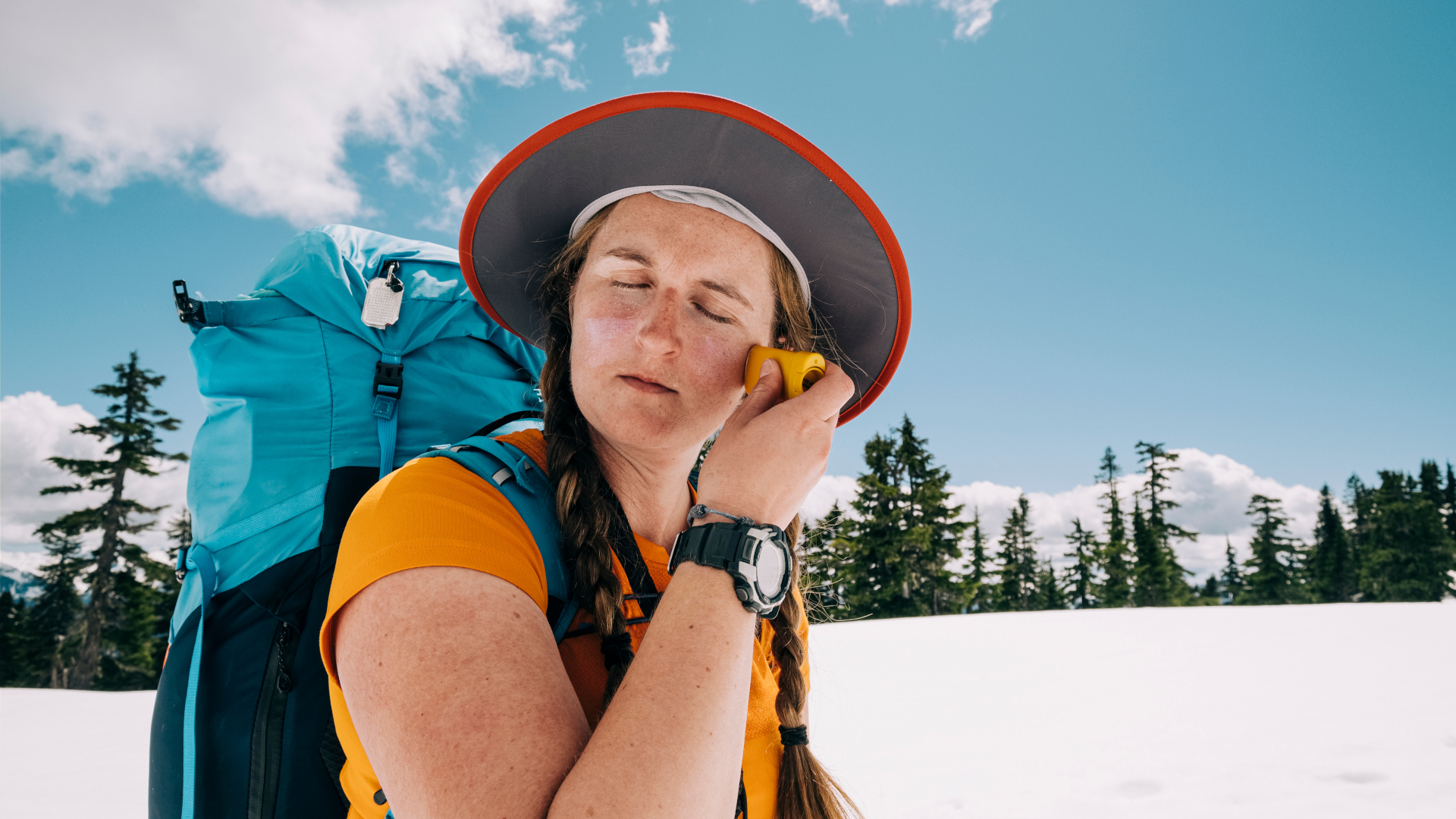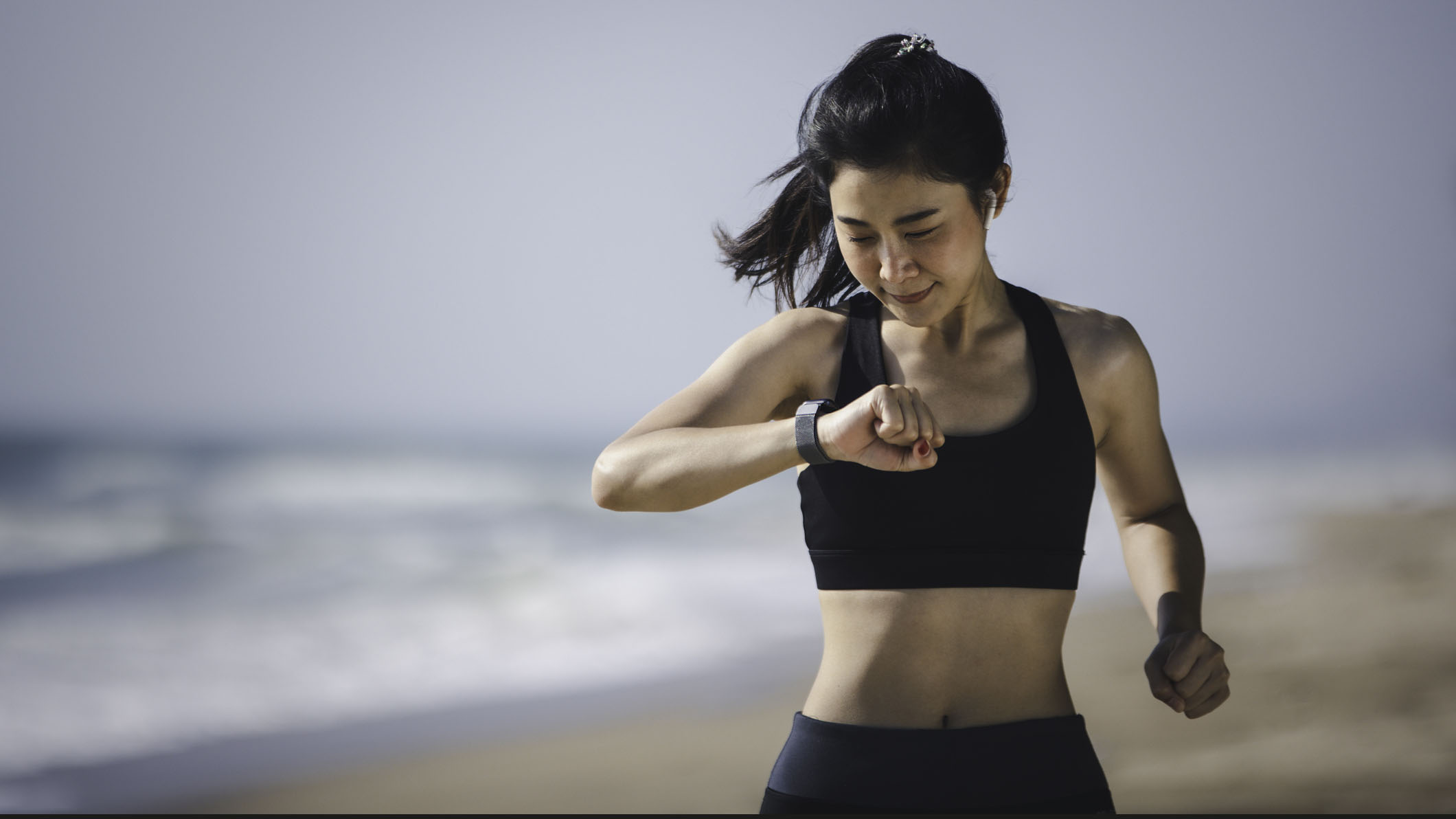How to decode the label on your sunscreen
Know what you’re getting for your money, and how to choose the best sunscreen for you

With warmer days on the horizon, you’re likely to be looking forward to losing the mid layer and getting some much-needed sun on your skin when you hit the hiking trail or head out for a run. After so many months of covering up with fleece jackets and long hiking pants, it can be easy to forget about sun protection on those first few outings, but it’s crucial to protect your skin from damage.
Even if it’s still cold where you are, remember that you can get sunburn at any time of year and lots of the terrain that you like to adventure on or near – such as water and snow – reflect the sun’s UV rays, making them even more harmful to your skin and eyes.
But when you pick up a bottle of sunscreen at the grocery store, it can be tricky to decipher what all the terms and codes mean. We take all the work out of it for you with our guide to decoding the label on your sunscreen, so you know what you’re getting for your money, and how to choose the best sunscreen for you.

Broad-spectrum
Broad spectrum means that your sunscreen will protect your skin against both UVA and UVB rays. This has become standard in recent years, but it’s still a good idea to check the bottle for this label before you buy.
UVA
UV stands for Ultraviolet and UVA rays are a type of electromagnetic radiation from the sun that are responsible for the skin damage that causes tanning, as well as wrinkles and aging. These rays can also contribute to sunburn and it’s important to ensure your sunscreen protects against UVA rays as well as UVB rays. UVA ratings are sometimes denoted with a star rating, and the higher the better, while in Europe the terms will be inside a circle to confirm it is EU-approved.
UVB
UVB rays are the rays that are the rays that are responsible for sunburn and play a key role in skin cancer. All sunscreens should offer some protection against UVB rays unless they have passed their expiry date.

SPF
SPF stands for Sun Protection Factor and refers to the amount of UVB protection offered and the recommended amount of time your sunscreen will protect you from UV rays. As the Skin Cancer Foundation explains, understanding SPF is a little complicated, but basically, if you wear sunscreen with SPF 30 (and apply it properly according to directions), it should take your skin 30 times longer to burn than with no sunscreen.
All the latest inspiration, tips and guides to help you plan your next Advnture!
In lab tests, a higher SPF equals longer protection. Still, the Foundation advises that this can create a false sense of security among users, and it’s more important to apply sunscreen thoroughly 30 minutes before going outside and reapply vigilantly. They recommend always using sunscreen with an SPF of 30 or higher.
Mineral
Also called physical sunscreens, mineral sunscreens use titanium dioxide and zinc oxide to deflect the sun’s rays, creating a physical barrier between your skin and the UV light. These types of sunscreen don’t absorb into your skin so they leave that white, chalky look and not everyone likes them, but according to the MD Anderson Cancer Center at the University of Texas, they offer better protection than their chemical counterparts. This is partly because you can see when it’s time to reapply. If you don’t love the chalky aesthetic but want the added protection, they recommend getting a tinted version that blends into your skin, such as this one on Amazon.

Chemical
Chemical sunscreens use active ingredients that absorb and change the chemistry of the sun’s harmful rays to reduce damage. They tend to use at least one ingredient such as oxybenzone, octinoxate, dioxybenzone, homosalate or octocrylen and are easy to apply, coming in both cream and spray forms. However they wear off quickly and need to be reapplied frequently, and it’s harder to tell when they’ve worn off.
Furthermore, if you’re planning on getting into the sea, a lake or river while wearing sunscreen, it’s important to know that chemicals like oxybenzone have toxic effects on marine life. A mineral sunscreen is the more environmentally friendly option for eco-conscious hikers.
Hybrid
Hybrid sunscreens contain both mineral and chemical ingredients to offer some of the protection of mineral sunscreens in an easier-to-apply formula. Your sunscreen may not use the word “hybrid” on the label, but if you read the ingredients you’ll be able to decipher if it contains titanium dioxide and zinc oxide plus other ingredients. Make sure you read the instructions so you know how often to reapply this sunscreen.
PA+
PA ratings are another way of rating the UVA protection offered by your sunscreen, and it’s not commonly used in the US, UK or Europe as there’s not yet a consensus on how reliable it is. However, if you’re buying sunscreen online or when you’re traveling, you may see this rating, and the more plus signs the better. Look for an additional SPF rating to understand the protection of your sunscreen before you buy it.

Sensitive
If you have sensitive skin, you’ll be looking for this word on the label, but what does it actually mean? Often, it just means the sunscreen is fragrance-free, which might be appealing to those who don’t have sensitive skin too, however the Skin Cancer Foundation does advise that mineral sunscreens, such as Aveeno’s Positively Mineral, are usually kinder to those with sensitive skin than chemical sunscreens.
Sport
Sport sunscreen has added water-resistance to prevent it from washing off the minute you jump into the lake or start sweating. There is no such thing as waterproof sunscreen, so you’ll still need to reapply regularly, but this type of sunscreen is a good shout if you’re not just going to be lazing around in your hammock.
Sport sunscreen is also oilier, which means it doesn’t come off with sweat or water, and that gives it an added eco-friendly advantage since it doesn’t all simply wash into the sea the moment you dive in.
Expiration date
Finally, some sunscreens will be stamped with an expiration date, while others aren’t, and while you might not worry about the expiry date on that can of tomatoes sitting in your pantry, the Mayo Clinic does advise you to throw out sunscreen that is past its date.
In the US, the FDA requires all sunscreen to retain its original strength for at least three years, so if yours doesn’t come with an expiration date, the Mayo folks suggest you write the date you bought it on the bottle with a Sharpie, then throw it out if three years pass before you’ve finished it.
Julia Clarke is a staff writer for Advnture.com and the author of the book Restorative Yoga for Beginners. She loves to explore mountains on foot, bike, skis and belay and then recover on the the yoga mat. Julia graduated with a degree in journalism in 2004 and spent eight years working as a radio presenter in Kansas City, Vermont, Boston and New York City before discovering the joys of the Rocky Mountains. She then detoured west to Colorado and enjoyed 11 years teaching yoga in Vail before returning to her hometown of Glasgow, Scotland in 2020 to focus on family and writing.

